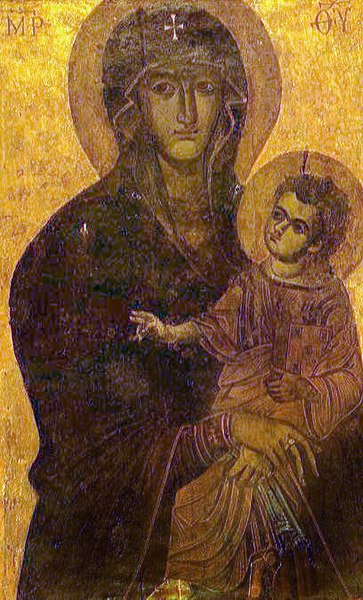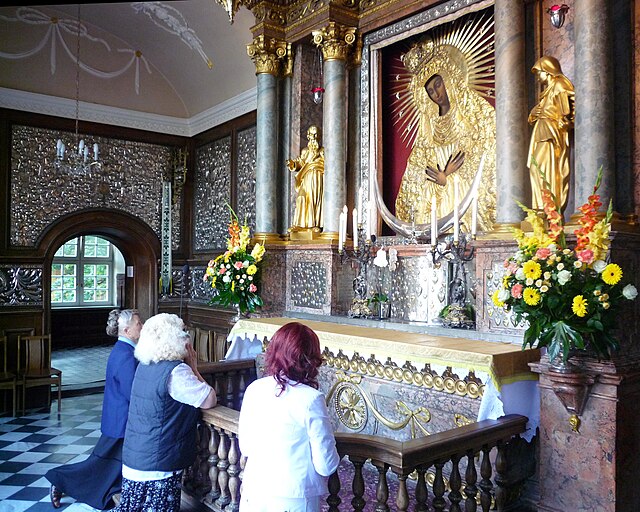Marian art in the Catholic Church
Mary has been one of the major subjects of Western art for centuries. There is an enormous quantity of Marian art in the Catholic Church, covering both devotional subjects such as the Virgin and Child and a range of narrative subjects from the Life of the Virgin, often arranged in cycles. Most medieval painters, and from the Reformation to about 1800 most from Catholic countries, have produced works, including old masters such as Michelangelo and Botticelli.
Our Mother of Perpetual Help, an icon of the Cretan school, in Rome since the 15th century. Archangels Michael and Gabriel are also depicted.
Salus Populi Romani, a popular icon in Rome.
Praying at Our Lady of the Gate of Dawn in Lithuania.
The Madonna of humility by Domenico di Bartolo 1433 has been described as one of the most innovative devotional images from the early Renaissance
In art, a Madonna is a representation of Mary, either alone or with her child Jesus. These images are central icons for both the Catholic and Orthodox churches. The word is from Italian ma donna 'my lady' (archaic). The Madonna and Child type is very prevalent in Christian iconography, divided into many traditional subtypes especially in Eastern Orthodox iconography, often known after the location of a notable icon of the type, such as the Theotokos of Vladimir, Agiosoritissa, Blachernitissa, etc., or descriptive of the depicted posture, as in Hodegetria, Eleusa, etc.
Madonna of the Book by Sandro Botticelli, 1480
Our Mother of Perpetual Help, Icon of the Virgin Mary, 16th century. St. Catherine's Monastery in the Sinai.
The Salus Populi Romani icon, overpainted in the 13th century, but going back to an underlying original dated to the 5th or 6th century
Madonna and Child by Filippo Lippi (15th century)







